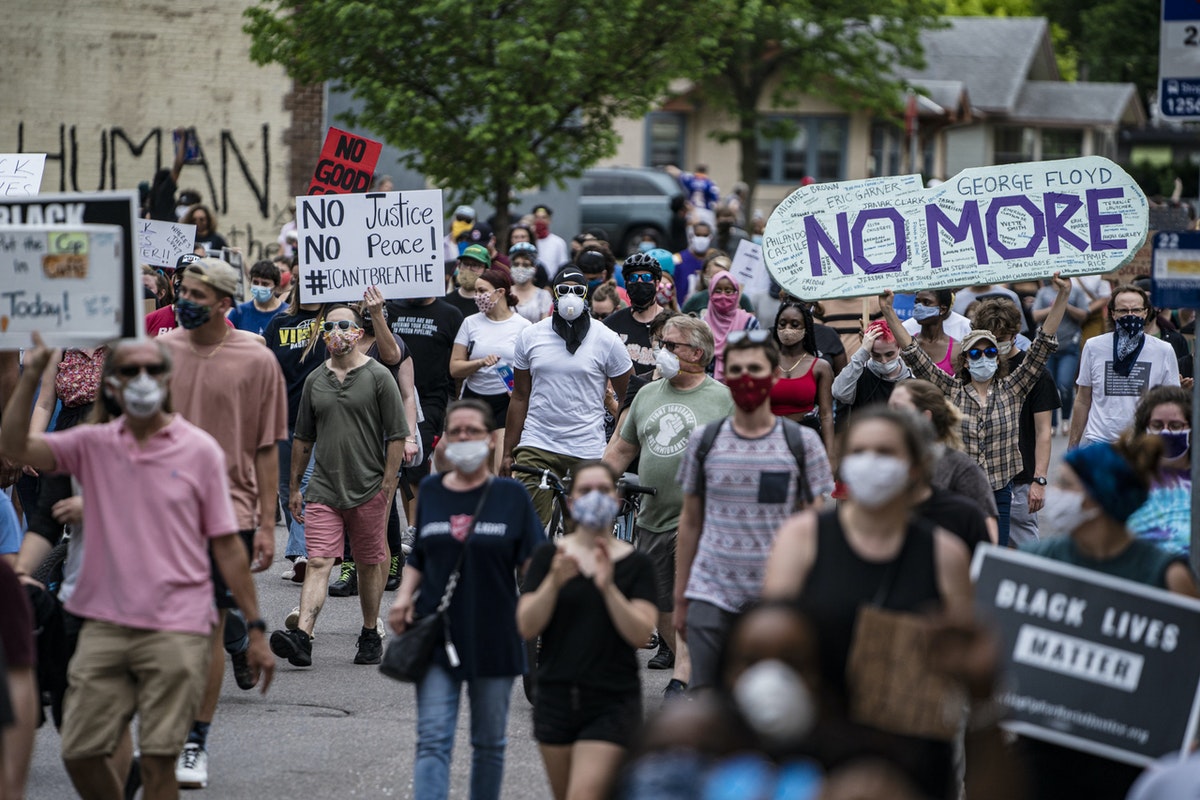On July 17, 2014, NYC police officer Daniel Pantaleo had approached Eric Garner for peddling loose cigarettes, a violation of the city’s administrative code. The encounter then escalated into an argument before Pantaleo began trying to restrain Garner by choking him while he was breathless and said “I can’t breathe.” In a following banned chokehold arrest, the police’s arm was spotted around Garner’s neck, killing the unarmed black man.
A New York grand jury voted against indicting Pantaleo that year. The killing, which was recorded by cellphones, fueled the burgeoning “Black Lives Matter” movement across the U.S.
A month later, on August 9, 2014, Michael Brown Jr., an 18-year-old African American man, was fatally shot by 28-year-old white police officer, Darren Wilson, in the city of Ferguson, Missouri, a suburb of St. Louis after being grabbed by the neck through his car window and threatened. The unrest then reached a breaking point when on November 24, 2014, the grand jury decided not to indict Darren Wilson on any criminal charges. The death of the black teenager in Missouri again ignited further tension over the country to rally for justice for black residents in the U.S.
Six years have passed since then. As national protests spread anew in reaction to the death in Minneapolis of George Floyd, another African American man killed by another white officer, a growing chorus could be heard to ask what America has done to stanch the bleeding. A tragic answer hung heavily in the air.
“What is true about this moment that was also true in 2014 is that these are the symptoms of a centuries-old virus of white supremacy in America,” said Brittany Packnett Cunningham, co-founder of the Campaign Zero movement against police violence.
“It’s unrealistic because it took us hundreds of years to get into this set of circumstances, and it’s going to take us more than six years to get us out. And it’s insulting because it’s actually the work of non-black people to uproot anti-blackness, and it is the work of white people to dismantle white supremacy, because it directly benefits them.”
The death of George Floyd in public in direct violation of what the Minneapolis police department manual says about chokeholds. He told officers he couldn’t breathe and begged for his life. What is particularly stunning about the brutality of the police across the country is that they seem to expect impunity. They do not serve the public or keep the peace; they serve themselves.
The last words of George Floyd is surrealistically similar to the shouting of Eric Garner before death in Staten Island, “I can’t breathe.”
After months of social distancing to avoid spreading COVID-19, the protests represented a breaking point not just in the fight against racist police violence, but also in the fight against the disease. By gathering in crowds with little chance of social distance, the masked demonstrators risked not just police violence but their own health, all to lend their voices to the chorus demanding an end to racist violence.
This time we are done with taking “no” for an answer. Pandemic or not, we are not to fail. We as a nation will not let this go on any further than what the system has allowed.






